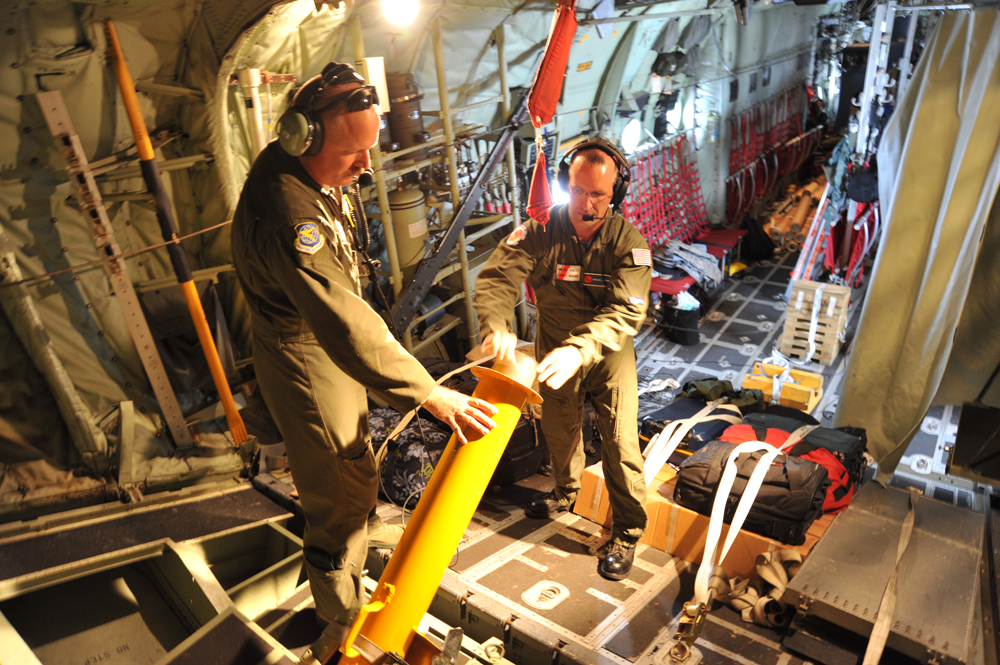Upper Ocean
The WHOI Float Group works with Air Launched Autonomous Micro Observer (ALAMO) floats, which are small enough to be conveniently deployed from an aircraft, to investigate upper ocean processes.
Unlike Argo floats, which operate on a ~10-day cycle from the sea surface to 2000 meters and back again, ALAMO floats are typically programmed with shallower and more rapid cycles. This allows them to measure ocean temperature and salinity with a high spatial and temporal resolution, making them particularly well-suited to observing relatively brief, localized phenomena like hurricanes.

Dr. Steven Jayne of the WHOI Float Group and Chief Master Sergeant Mike McDonald deploy an ALAMO float out of the launch tube of a U.S. Air Force "Hurricane Hunter" aircraft. (Photo courtesy of U.S. Air Force/Maj. Marnee A.C. Losurdo)
ALAMO floats, often deployed using Hurricane Hunter type aircraft to seed large numbers of instruments in and around hurricanes, can observe ocean temperature and salinity:
- Before the passage of a storm (to improve the intensity forecast of the storm)
- During the storm (to observe the ocean mixing and development)
- After the storm (to measure the subsequent restratification of the ocean)
Funding and Collaborators
Support for upper ocean studies comes from WHOI, MRV Systems, the National Oceanic and Atmospheric Administration, Hurricane Hunters – 53rd Weather Reconnaissance Squadron, the US Naval Academy, and the US Office of Naval Research.

An ALAMO float, used by the Float Group to study upper ocean processes.